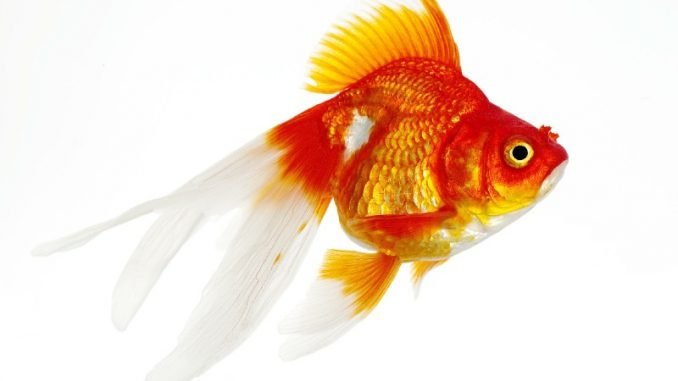
The ryukin goldfish is a freshwater fish that is popular for its exotic appearance. This species, from the family Cyprinidae, was first seen in China many years ago. It later migrated to Japan, which is now considered to be its origin.
The ryukin goldfish is one of a few species known as fancy goldfish because of its unique appearance. It is related to the wakin, a goldfish with a twin tail. The tail of the ryukin goldfish is similar to that of the wakin.
Because of its unusual, exotic appearance, the ryukin goldfish is popular among home aquarists. It has a slightly different shape to other more common goldfish, with a short body, a rounded belly, and a high back. This makes its head look elongated and pointed.
TABLE OF CONTENTS
Ryukin Goldfish Facts & Overview
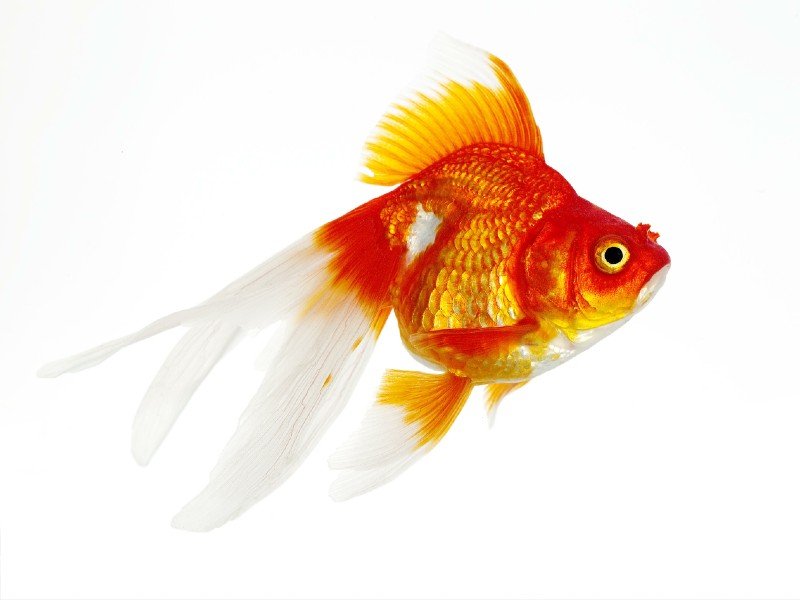
| Category | Rating |
| Care Level: | Easy |
| Temperament: | Placid |
| Color: | Various shades of red, white, and orange, with black markings. |
| Lifespan: | 10–15 years |
| Size: | 6–10 inches |
| Diet: | Omnivore |
| Family: | Cyprinidae |
| Minimum Tank Size: | 10 gallons |
| Tank Setup: | Freshwater |
| Compatibility: | Similar sized freshwater species |
The ryukin goldfish is known by the scientific name Carassius Auratus, and it belongs to the Cyprinidae family of goldfish. Originating in China, this fish is believed to have come to Japan from the Ryukyu Islands, located between Taiwan and Japan. This is where the ryukin goldfish gets its name from.
The ryukin goldfish was first seen in Japan as early as the late eighteenth century. In the past, it has been referred to by numerous other names, including the onaga goldfish, the nagasaki goldfish, the fringetail, the Japanese ribbontail, and the fantail.
You can find the ryukin goldfish in the wild, where it can live for up to 20 years. Its lifespan in captivity is usually shorter, and it can be expected to live for 12—15 years. This is considered a long lifespan for a goldfish.
Most pet stores sell ryukin goldfish. These fish are slightly more expensive than the more common species of goldfish, because of their elaborate appearance. They usually cost between $8 and $15 in regular pet stores.
If you buy ryukin goldfish from an exclusive breeder, you may have to pay as much as $50 for a single fish.
Appearance & Behavior
The ryukin goldfish has an unusual appearance, with a large hump in the shoulder area, between the head and the body. The underbelly is full and rounded, almost egg-shaped.
The male ryukin goldfish has a more elongated body, while the female is more rounded, with a thicker, fuller belly. This difference becomes even more pronounced as the female ryukin goldfish approaches breeding time. When she is ready to mate, her belly becomes swollen and fills with eggs.
There are a few varieties of ryukin goldfish. Some varieties have short fins, and some have long fins. The long-finned varieties are more popular with home aquarists because they are more readily available.
The ryukin goldfish has a split tail fin, like the fantail goldfish, which makes it look like it has a double tail fin.
You can find the ryukin goldfish in various different shades, from red to orange to white. It has a bright, attractive sheen, and often has distinct black markings. The calico varieties of ryukin goldfish are usually in high demand, because of their unique appearance. This makes them more expensive than the plain-colored varieties.
A fully grown adult ryukin goldfish is between 6—8 inches long when kept in an aquarium. In the wild, or when kept in a pond, the ryukin goldfish can grow to a length of 10—12 inches.
Typical Behavior
The ryukin goldfish has a calm and peaceful temperament most of the time. However, although ryukin goldfish are generally considered to be peaceful fish, they can sometimes display aggressive tendencies towards other fish that are much smaller than themselves.
This is particularly true of the male ryukin goldfish. A male may chase after or nip a much smaller tankmate, because he may see the smaller fish as fodder, and try to eat it.
The ryukin goldfish is an active fish and enjoys darting around in its tank. Therefore, it needs quite a lot of space. The ryukin goldfish should be paired with other fish that are also fast swimmers. This will allow the tank mates to get to the food quickly enough. If the tank makes are too slow, the ryukin goldfish may eat all of the food before its tankmates can get there.
You shouldn’t add live plants to your tank, as the ryukin goldfish has a tendency to eat them. However, these fish do enjoy having a few places to hide. You can place some artificial plants in the tank, and a few pieces of driftwood, and a couple of rocks.
The fins of the ryukin goldfish are very thin and delicate. They can easily be damaged if they rub against anything sharp or rough. Make sure that any extras in the tank don’t have sharp corners or rough edges. These can cause an injury to a fin, which could lead to a serious infection.
The ryukin goldfish needs a dark, quiet environment to sleep. The tank lights should be dimmed, or turned off completely, and the surroundings should be quiet, for the fish to sleep. It’s a good idea to provide these conditions at night, so that your ryukin goldfish will sleep when you do.
Ryukin Goldfish Care
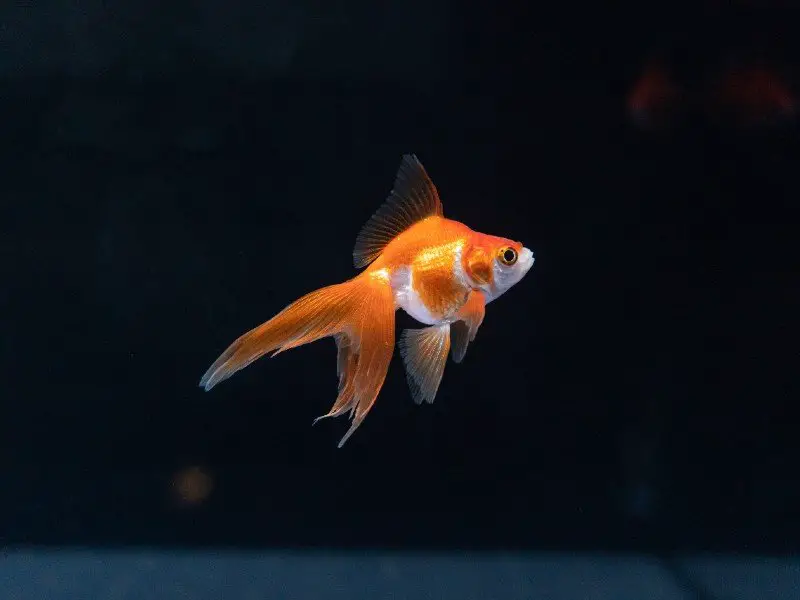
Ryukin goldfish are easy to maintain and require only a moderate level of care. They need less attention than most of the other fancy goldfish varieties.
The ryukin goldfish is a freshwater fish that is used to a variety of water conditions. Ryukin goldfish will be quite happy either in a tank or an outdoor pond. If you keep your ryukin goldfish in a tank, make sure it has enough space to swim around, as it is a fairly large fish.
Ryukin goldfish are omnivores and need a mixed diet of both plant-based and meat-based food.
The ryukin goldfish is prone to certain common diseases that affect many freshwater fish. Swim bladder and dropsy are both diseases that frequently affect this species.
Habitat and Tank Requirements
The ryukin goldfish is a freshwater fish that isn’t used to warm water. It has origins in China and Japan, where the waters are usually cold. The water in your ryukin goldfish’s tank shouldn’t be too warm.
Because the ryukin goldfish loves darting in and out of hiding places, it will enjoy driftwood and a few synthetic plants and rocks in your aquarium.
You should place the tank in a room that gets some natural light. The ryukin goldfish needs a regular cycle of light and dark and will do best if it has exposure to natural light for a few hours a day.
A clean tank is essential for the well-being of your ryukin goldfish. Clean the tank and replace the water regularly. Goldfish generally produce a lot of waste, and the ryukin goldfish is no different.
The bottom of the tank should be vacuumed with a siphon to remove waste matter and residual food. At least a quarter of the water should be removed and replaced twice a month. This will help to prevent a build-up of algae and other harmful organisms in the tank.
Tank Conditions
The ryukin goldfish can survive in water with a broad range of conditions and does not have very specific requirements, apart from water temperature. Ryukin goldfish need colder water than many other freshwater fish. Because the ryukin goldfish is not a tropical fish, it will not do well in warm water.
The following water parameters should be used as a guide.
- pH: 6.0–8.0
- Water hardness, or dGH: 5–19
- Water temperature: 64°–72°F
- Tank size: minimum 10 gallons
The ryukin goldfish is a fairly large fish and needs a lot of space to swim around. The minimum recommended tank size for one ryukin goldfish is 10 gallons. If you have two or three fish, you should have a 20-gallon tank. For any more fish, you should increase the tank size by 10 gallons per fish.
Ryukin goldfish enjoy swimming to the bottom of the tank, and occasionally brush against it, so the substrate should be made up of soft gravel to avoid injury to the fish’s delicate fins and tail.
The ryukin goldfish can’t survive in warm water. You should use a water thermometer to ensure that the temperature doesn’t rise above 72°. If you live in a very cold climate, you might need to use a water heater to prevent the water temperature from falling below 64°.
To give your ryukin goldfish a few hiding places, you should include some plants, driftwood and rocks in the tank. However, ryukin goldfish tend to eat live plants. It’s better to place synthetic plants in their tank.
You will need a strong filter in the tank to cope with the large amount of waste that the ryukin goldfish produces.
Tank Mates
Ryukin goldfish do best when housed together with fellow ryukin goldfish. They are outgoing, sociable fish that enjoy having tank mates. You shouldn’t place smaller, weaker fish in the same tank.
The ryukin goldfish can be paired with other fish that have a double fin. Some suggestions of suitable tank mates are:
Diseases
Swim bladder is a disease that is common in Ryukin goldfish. It is often caused by constipation from overeating and will cause a distended, swollen belly. The fish will become sluggish and may avoid swimming.
The simplest treatment for swim bladder is to feed the affected fish a green pea. This should cure the constipation, and the swelling will subside. Isolate the affected fish in a separate tank until the symptoms have passed is best.
Many ryukin goldfish are susceptible to dropsy. This is a condition caused by kidney failure and results in severe fluid retention. Dropsy is very difficult to treat and is often fatal.
Diet and Feeding
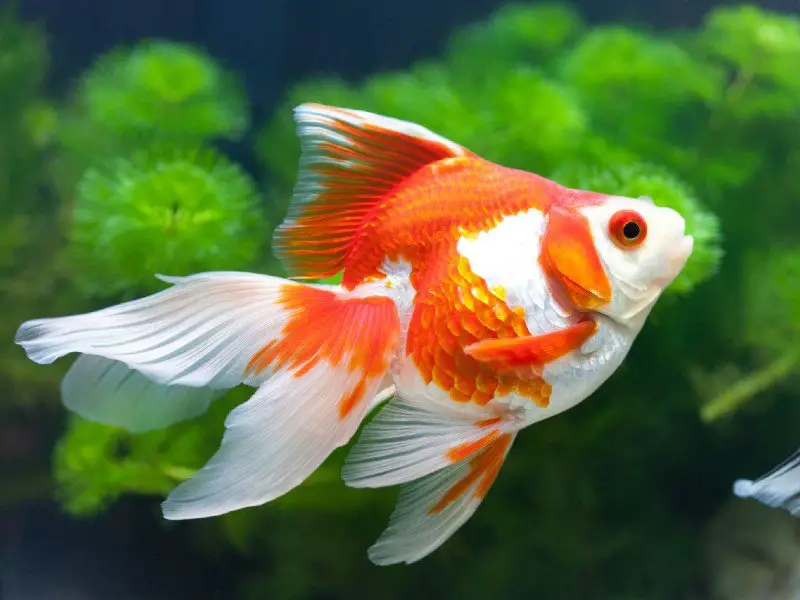
The ryukin goldfish is omnivorous and will thrive on a balanced diet of meat and plant-based foods. You should supplement commercial fish flakes and pellets with meat such as live or frozen bloodworms and brine shrimp.
Feed your ryukin goldfish very small portions, twice a day. Take care not to overfeed. Too much food may cause diseases, and may even kill your fish.
Breeding
Ryukin goldfish are easy to breed under the right conditions. Follow these steps for the most successful outcome.
- Set up a separate breeding tank.
- Ensure that there are lots of plants or spawning mops in the tank.
- Place a few adult fish of each sex in the tank.
- Lower the water temperature to 60–62°F.
- Start feeding high protein, meat-based foods. This will help to prepare your fish for spawning.
The male ryukin goldfish will start chasing the female, and will push her into the plants. The female will then lay thousands of eggs, which the male will fertilize. After this has occurred, you should remove both adult fish from the tank, as they will try to eat the eggs.
The eggs will hatch after a few days. You should feed the young fry on special food for fish fry until they are big enough to start eating bits of live meat. Once they have grown to about one inch long, you can put the fry into your main aquarium.
Should You Get a Ryukin Goldfish for Your Aquarium?
The ryukin goldfish is an unusual, exotic-looking fish that is easy to care for. Ryukin goldfish are readily available in pet stores and can be a talking point among your fish-keeping friends.
If your tank holds at least 10 gallons, and you’re prepared to clean it regularly, there’s no reason not to have a ryukin goldfish in your home aquarium.
With its bright colors and unique hump, this fish will add an extra dimension to your tank.

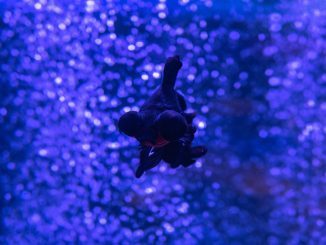
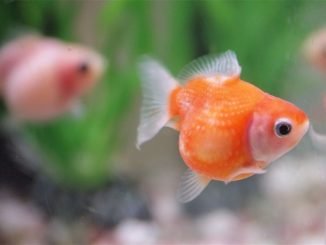
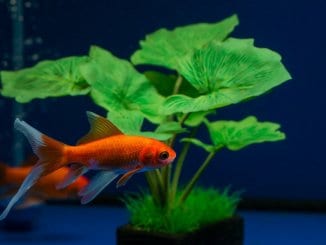
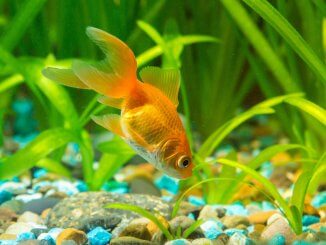
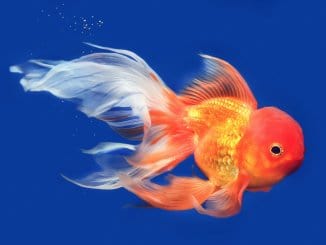
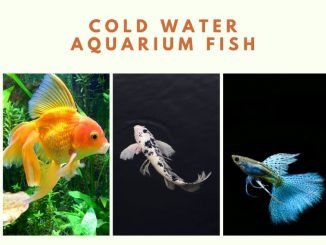
Be the first to comment